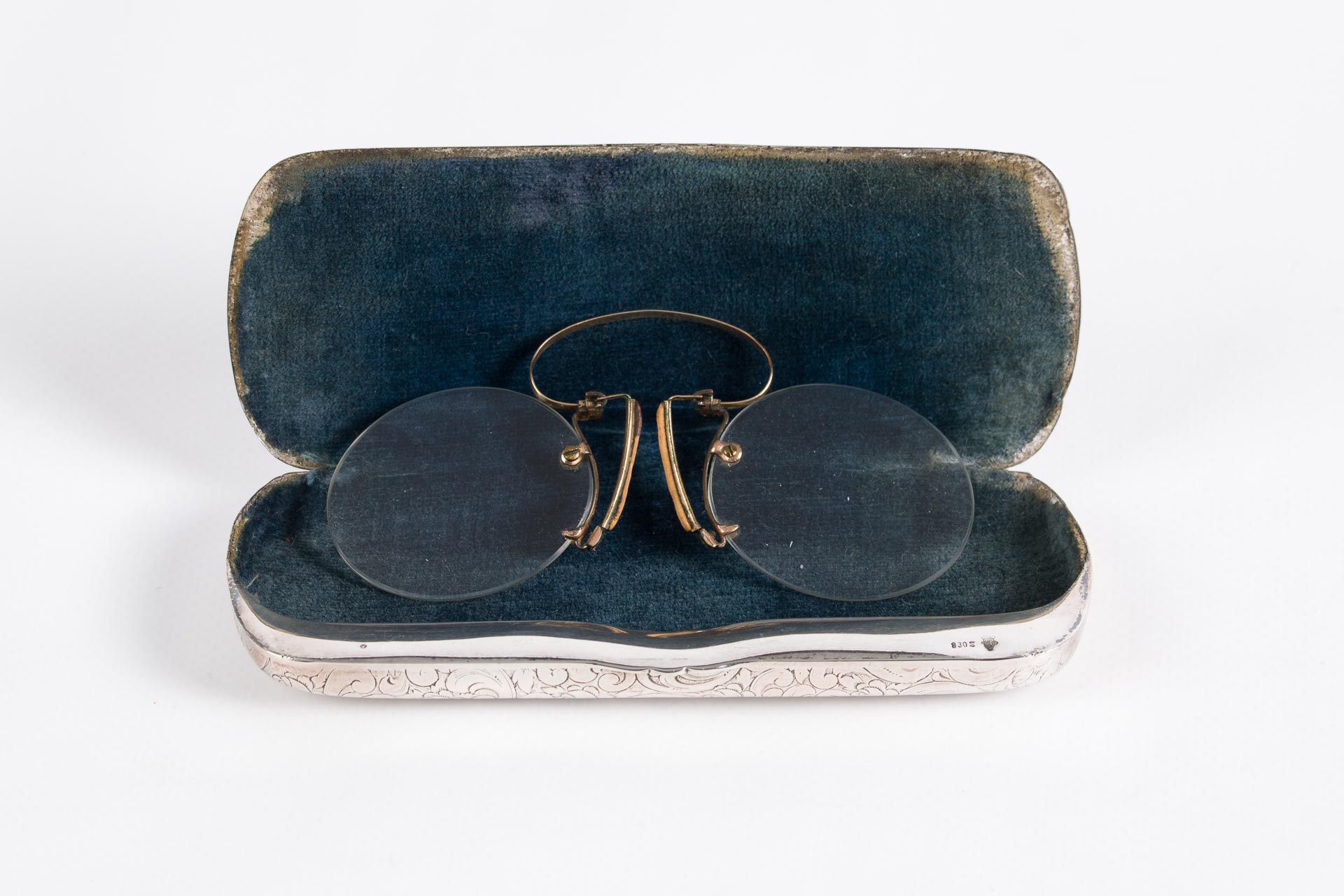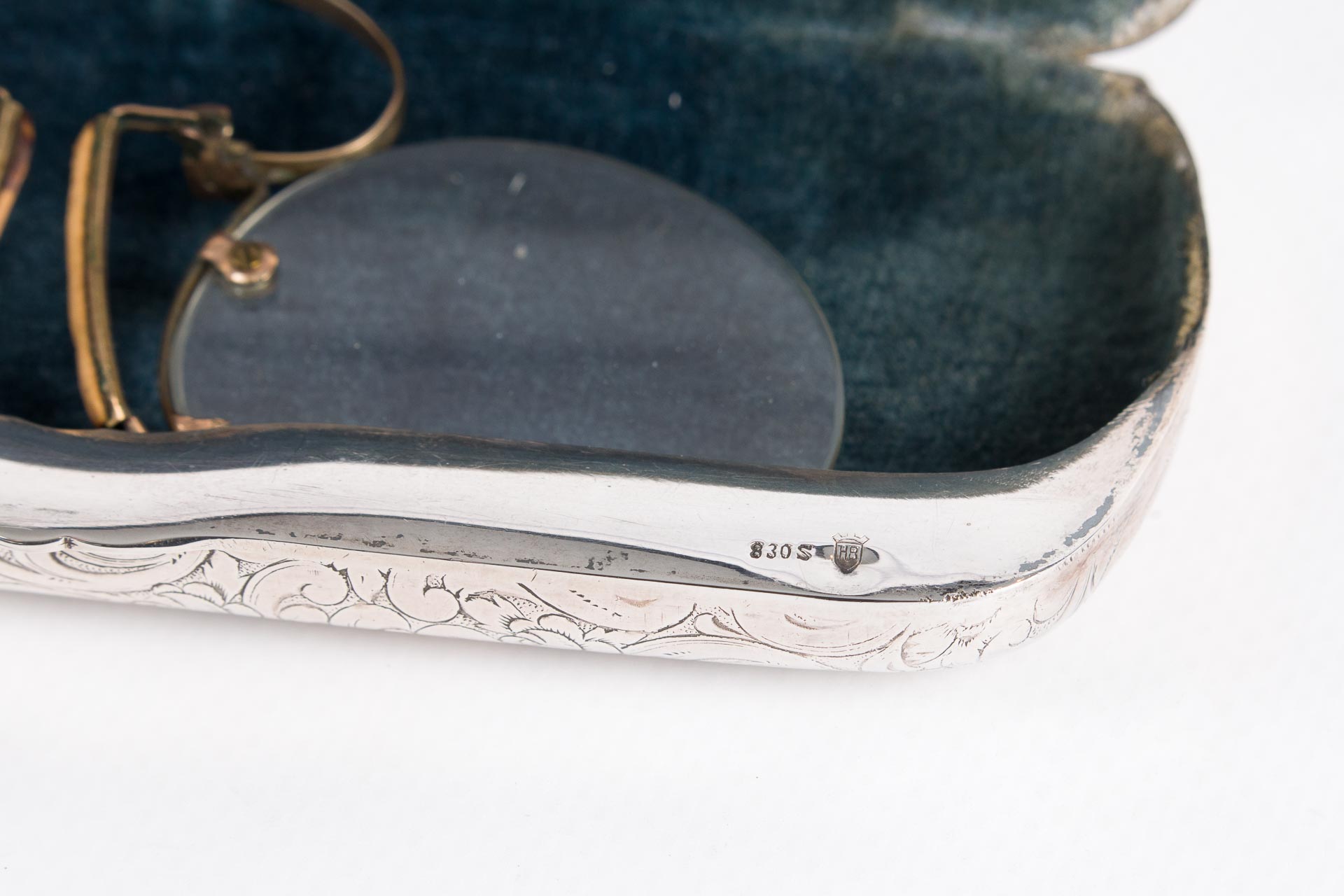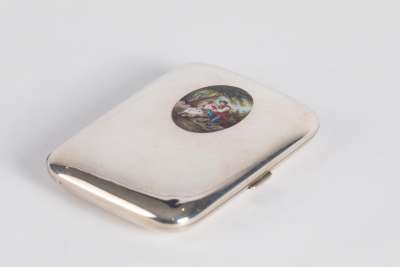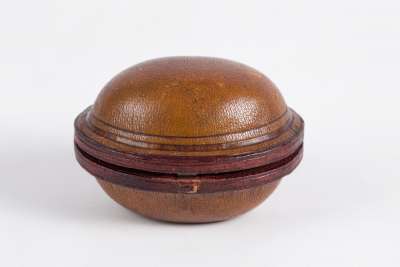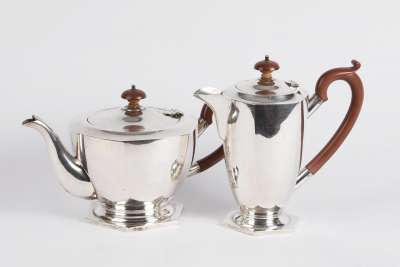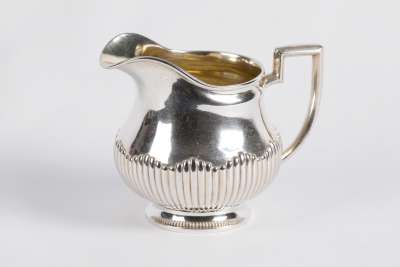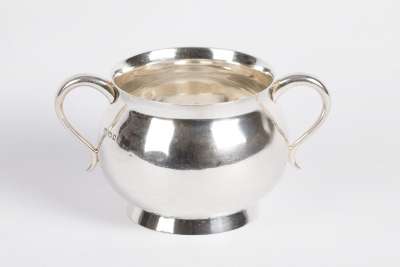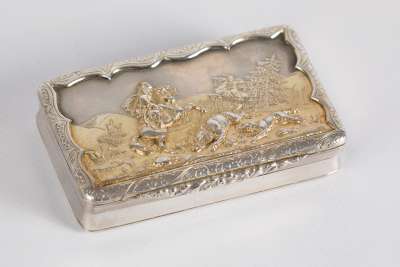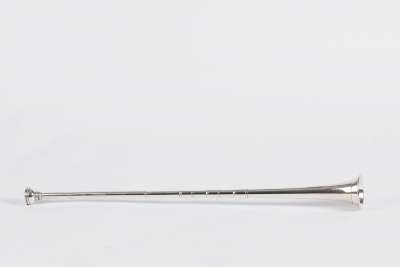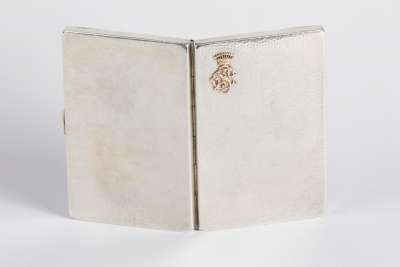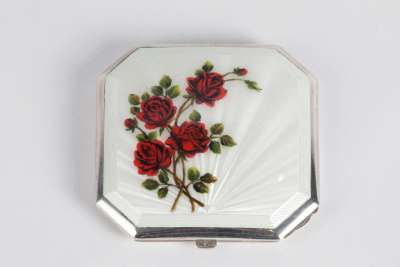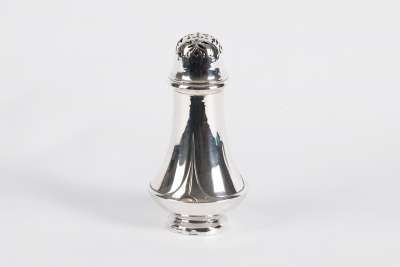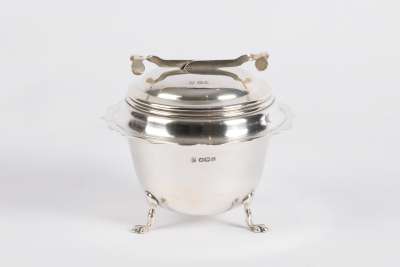This antique eyeglasses case, crafted circa 1900, elegantly houses a pair of pince-nez. The case is made from silver, a testament to its durability and timeless appeal. It is adorned with intricately chased rose flowers and tendrils, showcasing the detailed artistry characteristic of its era. The hallmark '830S' is stamped on the silver case, indicating its silver content, along with the maker's mark 'HB', attributed to Hermann Bauer, a prominent silversmith known for his exquisite craftsmanship in Germany. Enclosed within the case is a pince-nez made of 8-carat rose gold, adding a touch of luxury and sophistication.
Condition Report
The eyeglass case and pince-nez exhibit wear consistent with their age and usage. The silver case maintains its structural integrity, though slight surface scratches and tarnishing are visible, typical of a piece over a century old. The chased rose patterns retain their clarity, providing an insight into the high level of craftsmanship. The hinges and clasp mechanism remain functional, ensuring secure closure. The pince-nez shows minor signs of wear, with the rose gold retaining its warm hue. This level of preservation contributes to the historical value and character of the item, making it a desirable acquisition for collectors.
Dimensions
Weight: 108gm, Length: 13cm, Width: 5.4cm, Height: 3cm.
A Practical Accessory for Vision and Style
The eyeglasses case served as a practical accessory during the early 20th century, providing protection for the delicate pince-nez spectacles it housed. Pince-nez, popular for their rimless design and convenience, were often used by individuals needing vision correction while maintaining a fashionable appearance. This eyeglass case not only safeguarded the spectacles but also reflected the owner's personal taste and social standing, making it an essential item for those who valued both function and style.
Art Nouveau Influence in Design
This eyeglasses case is a fine representation of the Art Nouveau style, which emerged in the late 19th and early 20th centuries. The chased rose flowers and tendrils reflect the organic and flowing forms characteristic of this movement. Art Nouveau was marked by its focus on natural motifs and intricate detailing, aiming to harmonise art with the natural world. This style was particularly popular in decorative arts and everyday objects, making this eyeglasses case not only a functional item but also a piece of art that embodies the artistic spirit of its time.
Mastery in Metalwork
The production of this eyeglasses case and pince-nez required significant skill in metalworking. The silver case, with its detailed chased design, demonstrates the high level of craftsmanship achieved through techniques such as chasing and repoussé, which involve hammering the metal to create intricate patterns. The rose gold pince-nez showcases the ability to work with precious metals, requiring precision and care to produce a delicate yet durable piece. These methods highlight the expertise and dedication of artisans in creating functional yet ornamental items.
Created by Hermann Bauer
Hermann Bauer, the maker of this eyeglasses case, was renowned for his work in silver during the late 19th and early 20th centuries. Based in Germany, Bauer’s pieces are celebrated for their quality and attention to detail, often featuring intricate designs that reflect the Art Nouveau style. The 'HB' mark on the case signifies Bauer’s commitment to excellence and his influence in the realm of decorative arts. Collectors continue to seek out his work, appreciating the historical and artistic value of each piece he crafted.
Collected by Enthusiasts of Functional Art
This eyeglasses case with pince-nez is highly sought after by collectors who appreciate the blend of functionality and artistic design. These collectors value the historical context and craftsmanship inherent in such pieces, viewing them as tangible connections to the past. Items like this case serve as examples of how everyday objects can transcend their utilitarian purpose and become cherished artefacts. Collectors are drawn to the unique combination of materials, design, and maker, which together tell a story of cultural and artistic evolution.

